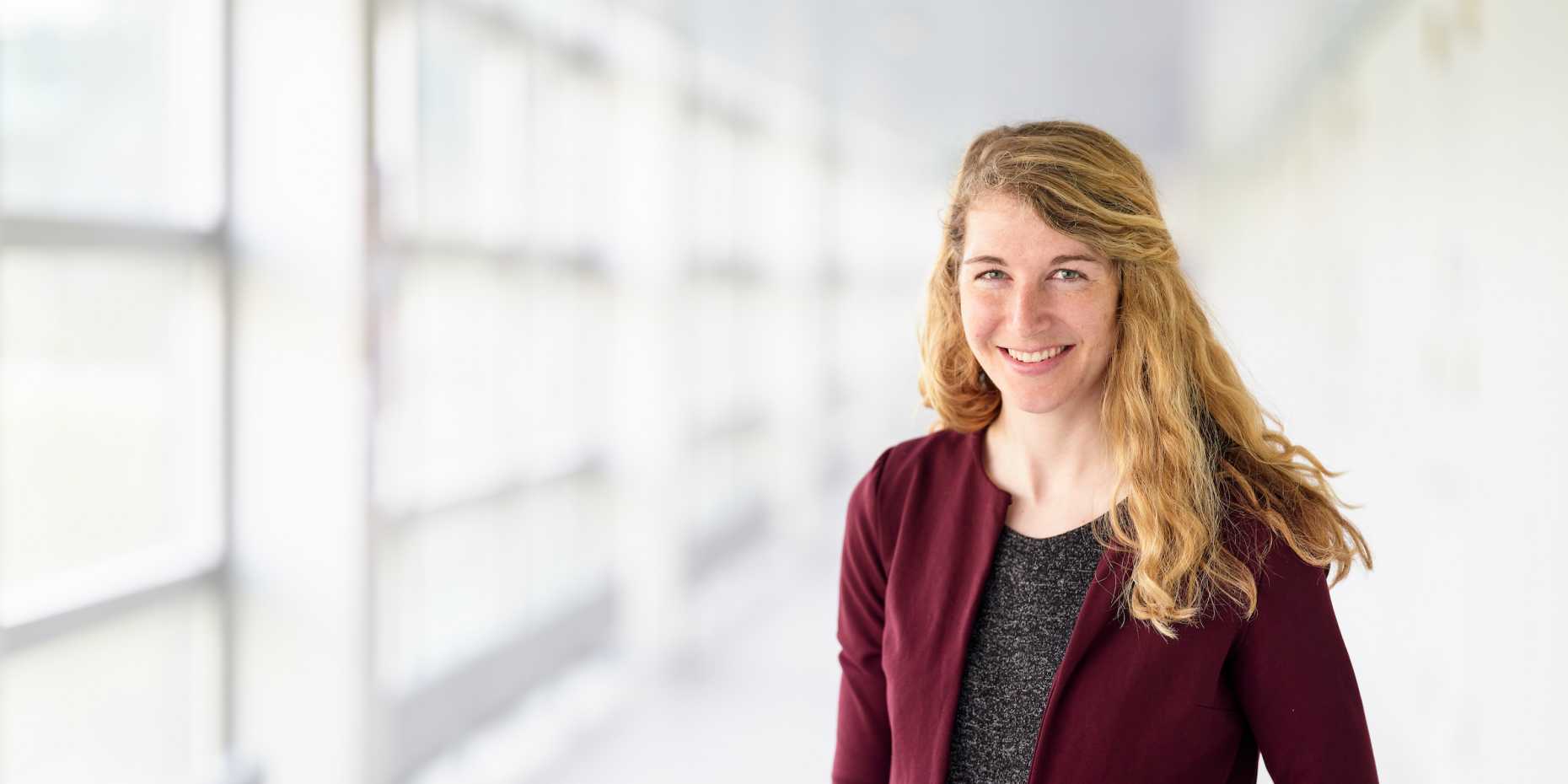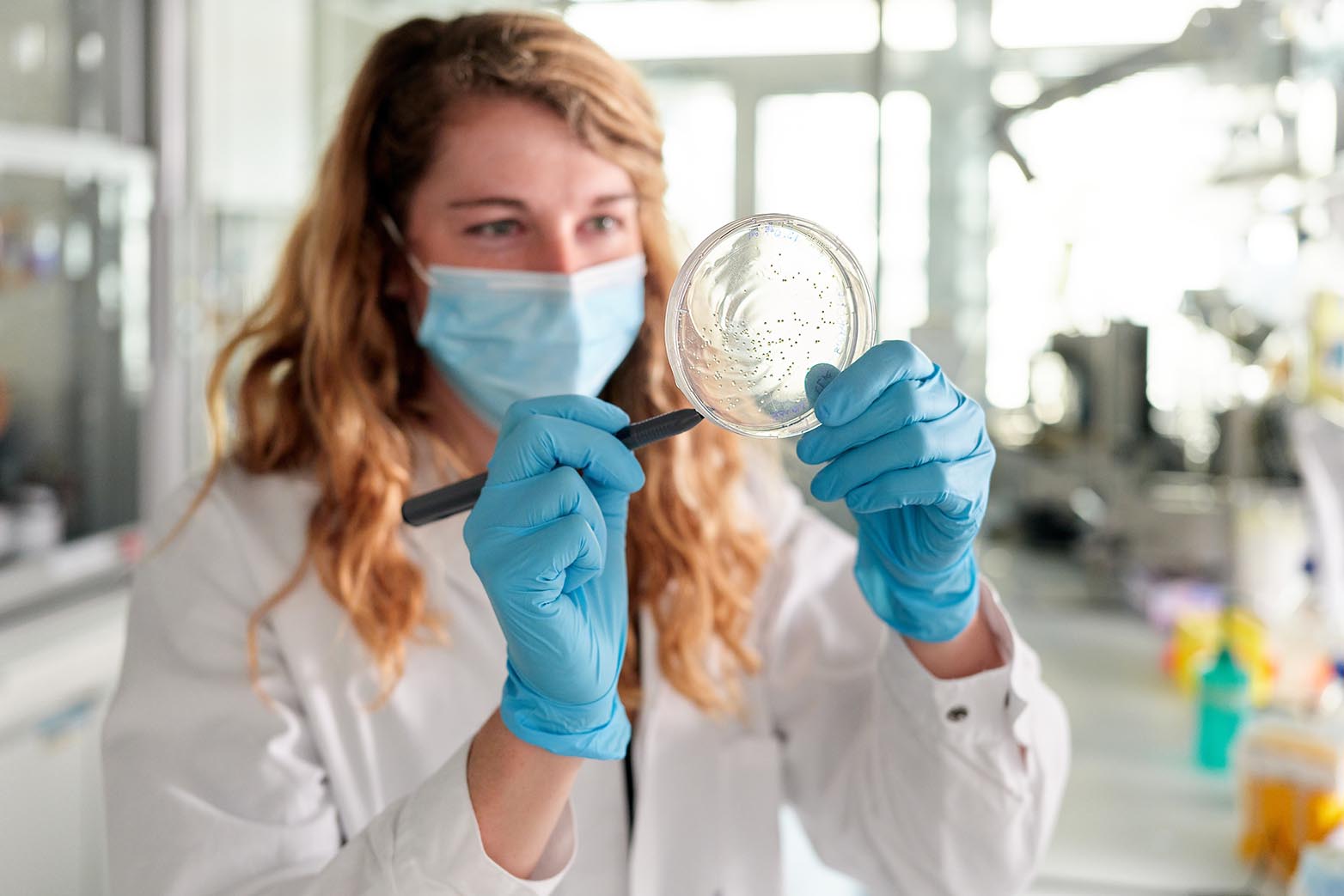A simple exterior – but complex interior
ETH Fellow Serina Robinson is devoted to microorganisms. She is particularly interested in the enzymes they use to produce and break down chemical substances. The young scientist is also especially fascinated by as yet uncultivated microbes.

Serina realised she wanted to be a scientist while doing field work in the Alaskan tundra as a research assistant during her Bachelor’s studies. Despite standing knee deep in boggy marshland, she was in her element collecting soil samples. She was just as excited back in the laboratory when analysing the nutrients present in the samples she had taken. “I really got the bug,” she recalls.
Robinson is currently engaged in research at the Institute for Microbiology, where she works as a postdoc as part of her ETH Fellowship. Working at ETH Zurich has been both her dream and ultimate goal for a long time. “It’s really exciting to finally be here!” she says. During her one-year postdoc position with Jörn Piel’s group, she is researching enzymes and small proteins, so-called peptides, produced by specific microorganisms. These microorganisms do not grow in the laboratory and thus the peptides they produce are under-researched, or simply unknown.
Metagenomics opens the way to new discoveries
Scientists currently use metagenomics to study microbes that cannot be grown in the lab: “Metagenomes are a type of snapshot that captures the DNA of all microorganisms present at a certain time in a specific ecosystem, such as soil, wastewater or even the human gut,” Robinson explains. The DNA from samples are extracted, sequenced, and can be used to reassemble the genomes of the individual organisms on the basis of overlaps between the individual segments.
The gene sequences of the microorganisms Robinson is working with originate from the metagenomic database of another group at the Institute for Microbiology: Shinichi Sunagawa and his colleagues have collected metagenomes from over 1,000 different marine locations. Robinson searches this source for DNA blueprints for peptides that could be interesting as active ingredients for medicines.
She is currently working on a bacterium that was originally only discovered through metagenomics. “It is very different from previously known microorganisms,” she explains. What’s more: it produces a new type of peptide in a family of compounds which were discovered by the Piel lab. Last year, the Piel and Oxenius labs found that a different peptide in this family has antiviral activity, making this class of peptides an important and medically-relevant area of research.
Alternatives to E. coli
Robinson uses synthetic biology tools to manufacture this peptide in the laboratory. This involves introducing the relevant genes, either individually or in differently composed groups or “clusters”, into the host organism. If everything goes to plan, this organism then makes the desired active substance.
The E. coli bacterium is generally used as a host for this. “But E. coli is not able to generate active proteins from all organisms,” Robinson explains. Similarly, E. coli is not capable of producing the final form of the peptide of the bacterium the scientist is working with (which is impossible to grow in the lab), so she is working with an alternative host developed by the Piel research group.
All about microorganisms
Robinson has often asked herself why she is so fixated by microorganisms. “I find it simply fascinating to work with them in the laboratory: they look so simple from the outside – tiny specks on an agar plate. But what goes on inside them is so incredibly complex,” she says by way of explanation.

She is fascinated by the fact that whatever has to be made, somewhere there is a microbe with an enzyme which can do exactly that. At the same time, Robinson is extremely interested in how microorganisms can be used to break down unwanted substances, such as those found in soil or wastewater. “The same enzyme families are often involved both in the manufacture and breakdown of chemical substances,” she explains. This is why she deliberately chose for her doctoral thesis a research group working at the interface of biosynthesis and biodegradation; two specialist areas that are traditionally separate.
But that’s not all: as well as the interplay of the enzymes and the issue of how they are made, Robinson is interested in aspects such as: Why do microorganisms actually make certain products? What is the ecological role of these substances in the environment? How do they affect other organisms or shape microbial communities? How do they respond? And also: How do these communities react to foreign substances?
Next stop: Eawag
The next phase of Robinson’s career begins in September, when she is due to join the Swiss Federal Institute of Aquatic Science and Technology (Eawag) as a tenure-track group leader. Here she will be able to set up her own research group in the Environmental Microbiology department. Robinson and her future colleagues will concentrate especially on aspects concerning wastewater and the breakdown of the substances it contains, such as pesticides, medicines or even artificial sweeteners.
Although microorganisms are already being used to biodegrade these substances, the scientist wants to control this process more systematically in future: “I’d like to know how bacteria break down substances in wastewater, and which enzymes they use to do it.” Understanding this would possibly allow more accurate prediction about what microbial communities with a specific composition are able to do and how they could perhaps be modified and improved. They could then be used in different applications, such as to clarify wastewater more quickly or break down other substances biologically.
Fostering young talent
Serina Robinson thinks there are a number of reasons why she has been able to enjoy a successful career as a scientist. One is the opportunity she had to work in various research groups in the US and Europe. “This opens up new perspectives on how research is conducted and what is possible,” she explains. She was particularly inspired by spending 6 months at Wageningen University in the Netherlands and a year on a Fulbright scholarship at the Arctic University of Norway in Tromsø, where she worked with bacteria that use methane, a greenhouse gas, as an energy source.
The people she got to know at the various locations are especially important to her. Robinson says: “They’re like a family.” And this family has supported her in achieving her goal, for example in helping her build a network of contacts or find suitable research groups. “I think the community of researchers and mentors who have supported and guided me through the various steps have certainly been the most important factor in my career,” she says. That makes her even more delighted to soon have “her own” students to look after: not only is she keen to press ahead with her own research, but is also looking forward to her role as a tutor and mentor to budding scientists.

Comments
No comments yet